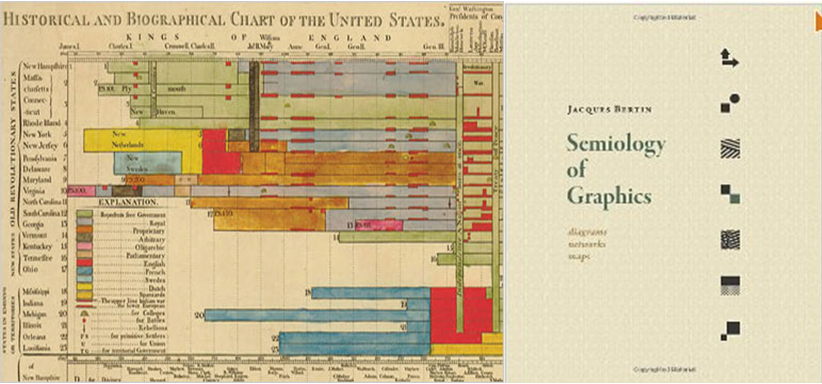It is not a co-incidence that all highly successful analyst have excellent data visualization skills. As a matter of fact, I think data visualization and creative story telling differentiates best of analysts from good analysts.
Be it design of a dashboard or a presentation after building an earth-shattering predictive model, visualization ends up being the face of all the hard work you have put in. Hence, it makes sense to spend time thinking about what is the best way of visualizing the data or insights from the data.
Sadly, not many analysts spend time on improving and thinking about visualization.
Look at it from this perspective, we sweat ourselves to get that extra percent of lift through our models or to make sure all the data flowing into the dashboards is right to the second and third decimal place. But, we usually spend a fraction of that time thinking about how this outcome would be presented and the impact it can create.
In this article, I am listing down the books, which have helped me improve immensely in data visualization. Further, some of these are resources for lifetime as I still continue to refer them, when I am stressing my grey cells over how to create that extra impact through my work.
For beginners:
[stextbox id=”section”]1. The Visual Display of Quantitative Information by Edward R. Tufte:[/stextbox]If there is one book you should definitely read on visualization, it is this book! First published in 1983, a classic book on charts, tables and various practices in design of data graphics. The book contains 250 illustrations of the best (and a few of the worst) statistical graphics, with detailed analysis of how to display data for precise, effective, quick analysis. Some of the well-known concepts like data-ink ratio and sparklines were outlined by Tufte in this book. The book also mentions various sources of graphical deception. A definite must read for every analyst!
[stextbox id=”section”]2. Visualize This: The FlowingData Guide to Design, Visualization, and Statistics by Nathan Yau:[/stextbox]This book from the creator of flowingdata.com provides approaches to tell stories with data and offers step-by-step tutorials and practical design tips for creating statistical graphics, geographical maps, and information design. It also provides details on tools that can be used to visualize data-native graphics for the Web and tools to design graphics for print.
[stextbox id=”section”]3. The Wall Street Journal Guide to Information Graphics: The Dos & Don’ts of Presenting Data, Facts, & Figures by Dona M. Wong: [/stextbox]A super practical guide to effective communication through graphs and charts. Concise, well written and easy to navigate, this book is a must read for people who have just started making presentations
[stextbox id=”section”]4. Show me the Numbers: Designing Tables and Graphs to Enlighten by Stephen Few:[/stextbox]A clear, concise and comprehensive book on how to design tables and graphs. It gives you the tools to create effective tables and charts, and the understanding on how and why these tools work. The book has a lot of practical advice which can be applied with Excel and hence can be put in practice straight away.
[stextbox id=”section”]5. Now You See It: Simple Visualization Techniques for Quantitative Analysis by Stephen Few:[/stextbox] This book starts where the previous one ends. Few talks about principles of visualization and their applications. Again, most of the learnings can be applied on Excel.
[stextbox id=”section”]6. Information Dashboard Design: The Effective Visual Communication of Data by Stephen Few:[/stextbox] A must read book for anyone who designs and creates dashboards for a living or wants to make a career in BI. This book will teach you the visual design skills you need to create dashboards that communicate clearly, rapidly, and compellingly. Key take-aways from the book are common dashboard design mistakes & ways to minimize distractions and confusions.
For advanced readers:
[stextbox id=”section”]7. Envisioning Information by Edward R. Tufte: [/stextbox] If you love the subject of data visualization, you will love this book. Tufte takes on a high-dimensional complex data and plots them on maps, charts, scientific presentations and courtroom exhibits. Topics in the book include layering and separation, micro/macro design, applying color and witing narratives. Some of the examples include sources as diverse as Gallileo’s observations of Saturn, a 3D map of a Japanese shrine, a visual “proof” of Pythagoras’ theorem, color studies by the artist Joseph Albers, and a New York train schedule.
[stextbox id=”section”]8. Visual Explanations: Images and Quantities, Evidence and Narrative by Edward R. Tufte:[/stextbox] Tufte starts discussing more advanced topics on arrangement of images, words and numbers in space and time. Visual Explanations centers on dynamic data–information that changes over time. This book includes an engaging narrative narrative of the 1854 Cholera Epidemic and a study on the Challenger space-shuttle tragedy.
[stextbox id=”section”]Special mentions:[/stextbox] Cartographies of time: A history of the timeline by Daniel Rosenberg & Semiology of Graphics: Diagrams, networks, maps by Jaques Bertin – Both these books are classic and give you a good perspective on how the field has evolved. You might still find some nuggets of gold here!
In my list of books to be read: Visual Thinking by Colin Ware. I have read some great reviews about the book, but have not been able to read it till now. It’s on my reading list.
If you have not read these books, please find them and read! On the other hand, if you have any other books which are not there in the list, please suggest them in the comments below.






